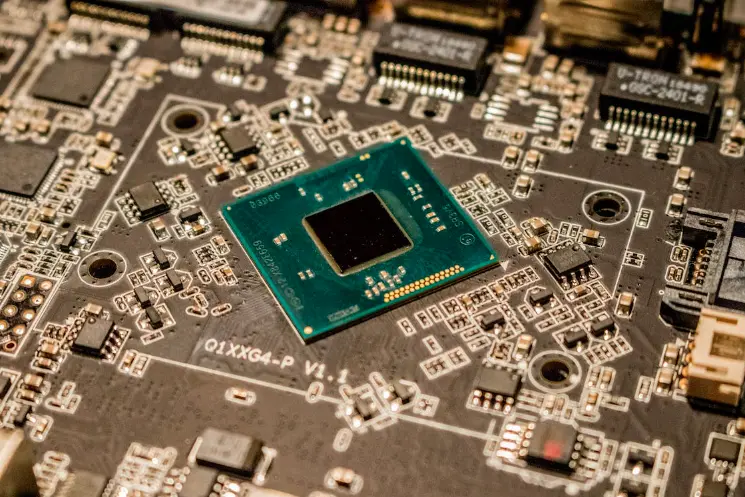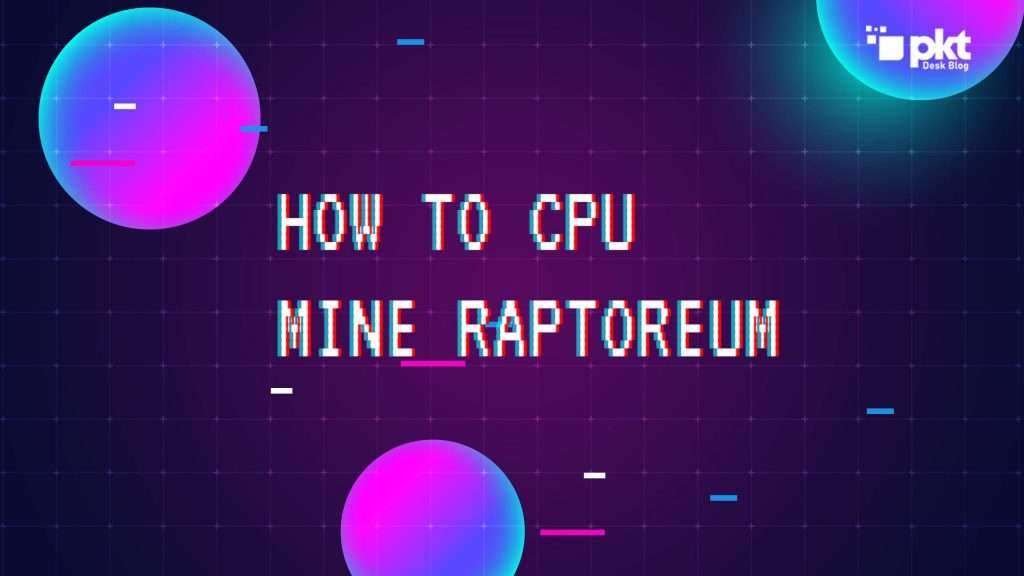Mining Raptoreum (RTM) is a relatively simple procedure that requires using a computer with an appropriate hardware configuration. The most common method of mining RTM is CPU power, which does not require specialized equipment.
Keeping track of changes in Raptoreum’s blockchain dynamics is also essential, as these can affect your mining performance. To begin the process, ensure you have installed the latest version of your public network’s client software. Once that has been completed, navigate to the folder containing your software and find and open the file ‘minerd.’ This will serve as your entry point into the world of RTM mining.
You will then need to enter several commands specifying various settings for your miner program:
• -a: Specify your preferred algorithm
• -o: Specify the URL of your pool
• -u: Enter your pool username (if required)
• -p: Enter your pool password (if required)
• –CPU-priority: Set the priority level for your CPU
Once all these details have been set and configured, you should initiate mining by entering the command ‘minerd start’. It may be necessary to restart or stop mining if you wish to change or update specific parameters or settings within the miner program itself; this can be done by entering ‘minerd restart’ or ‘minerd stop’, respectively. Your computer will now begin using its CPU to mine RTM blocks.
For a deeper understanding of this topic, continue reading.
What CPU is Best for Raptoreum Mining
There are some great options available if you’re looking for a CPU to help with mining Raptoreum. The most popular processor for Raptoreum mining is the AMD Ryzen 5 3600X, which offers excellent performance and energy efficiency. This CPU has a base clock speed of 3.8GHz and can reach up to 4.4GHz when overclocked. It also comes with 8 processing cores and 16 threads, making it ideal for intensive tasks such as Raptoreum mining.

The Intel Core i9-10900K is another popular option for Raptoreum mining CPUs. It’s powerful enough to handle the enormous computational requirements that come with cryptocurrency mining while also offering good energy efficiency. The chip features 10 physical cores and 20 threads, giving it plenty of power for any task you might throw at it. It has a base clock speed of 3.7GHz and can be overclocked up to 5.3GHz if desired.
For those who have a bit less money to spend but still want a decent processor for their Raptoreum mining endeavors, then the AMD Ryzen 7 3700X is an excellent choice. This CPU features 8 physical cores and 16 threads and has impressive clock speeds, ranging from 3.6GHz up to 4.4GHz when overclocked. Additionally, its TDP (Thermal Design Power) rating is just 65W, making it highly efficient in terms of energy consumption and performance levels compared to other processors on the market today.
Finally, the AMD Ryzen 9 3950X is another good option worth considering if you’re serious about your Raptoreum mining efforts – despite being slightly more expensive than either of the two CPUs mentioned above ).
This chip gives users 16 physical cores and 32 threads, along with an impressive base clock speed of 3GHz (which can be boosted up to 4.7GHz). Furthermore, its TDP rating stands at 105W, too – making it one of the most powerful options on this list regarding raw power output potential (but also consuming more electricity than other processors here).
Overall, whichever CPU you decide upon for your Raptoreum mining endeavors, each will provide good performance and reliability when combined with quality hardware components to maximize return on investment and profitability over time – depending on user skill level too!
How Much is Raptoreum Worth Mining
Raptoreum (RTM) is an up-and-coming cryptocurrency gaining attention for its promising potential and unique mining capabilities. As a result, people are wondering how much they can earn mining RTM.
The answer to this question depends on various factors, such as your location, the cost of energy, and the type of hardware you use to mine cryptocurrency. RTM operates on a proof-of-stake consensus mechanism, so when you join the miner network, you essentially purchase or stake a portion of the total amount of coins in circulation.
This rewards you with newly generated coins each time someone completes a transaction in the network.
In terms of earning potential, miners can make anywhere from $0.20 to $1.50 per hour, depending on their setup and hardware. Furthermore, miners who choose to mine using GPUs instead of CPUs can generally make more money in less time since GPUs have higher hash rates than CPUs do.
Additionally, electricity costs influence earnings; if the price is lower where you live, you can profit more than someone else with higher electricity costs.
Before starting to mine RTM, it’s important to remember that cryptocurrency prices are volatile and frequently fluctuate over time due to market conditions or other factors outside one’s control. That said, if done right and safely, it is possible to make money through mining RTM!
As such, it’s recommended that any prospective miner thoroughly research all aspects of cryptocurrency before investing any money into equipment and setup costs.
Can I Solo Mine Raptoreum
You may wonder if you can solo mine Raptoreum, and the answer is yes. Solo mining is when miners use their computing power to process Raptoreum transactions independently from other miners. Therefore, when a successful block is discovered, you alone will receive the block reward.
The primary benefit of solo mining is that all profits are yours to keep. There’s no need to share the rewards with other miners or pay any fees associated with a pool, as they’re not required. However, this also means that you’ll need more computing power to successfully mine blocks than if you were part of a larger pool of miners.
Before beginning your solo mining journey, there are several pieces of hardware and software that you’ll need. The most important part of the hardware is your computer’s graphics processing unit (GPU), or ASIC Mining Rig – these are specialized chips designed for performing coin calculations quickly and accurately.
It’s also important to have some internet connection and an up-to-date copy of the Raptoreum blockchain, which can usually be obtained directly from its official website. Finally, for software, it’s vital to have a compatible mining client like CastXMR or XMR-Stak installed on your system before starting the process.
If you’ve got all the necessary equipment, then it’s time to begin your quest! Start by setting up your wallet address so that payments can be sent directly from Raptoreum after the successful completion of each block.
From there, it’s just a matter of configuring settings within your chosen mining client, such as pool selection (if applicable) and difficulty level, before you start hashing away at blocks!
Solo mining isn’t without its challenges, though – as mentioned earlier, it requires more resources than joining a pool, meaning most individuals find it quite tricky to profitably solo mine due to the fixed costs associated with keeping up with network difficulty levels.
Additionally, it takes much longer for individual miners to find valid blocks than larger pools that rely on collective computing power – so patience and dedication will be vital in achieving success here!
Overall, individuals can solo mine Raptoreum, but for consistent profitability, we’d recommend joining an existing mining pool instead!
What is the Best Way to Mine with a CPU
Using a CPU to mine is an effective way to earn cryptocurrency and other rewards. It’s also relatively easy to do, as all you need is a computer with a processor that can handle the computational load required for mining.
The best way to mine with a CPU involves finding a suitable pool or network of miners and joining it. Mining in unison will enable you to reap the rewards faster by combining your computing power with others.
You’ll also need to ensure that your hardware can handle the workload required for mining, which will likely involve downloading specific software and making any necessary adjustments.
Once everything is set up, you should be able to start mining. However, bear in mind that CPU mining isn’t very efficient due to its low hash rates, meaning it won’t generate too much money in the long run compared to other methods, such as GPU or ASIC mining.
A good strategy is to spread your hash rate over multiple coins so that you’re more likely to receive profitable rewards from time to time, depending on the market prices of the affected assets.
Finally, if you want maximal efficiency for CPU mining, it’s worth using Linux over Windows 10 as developers within the industry have optimized this task more for this task. Whichever option you choose, make sure everything is configured correctly and regularly monitored so that it keeps running smoothly and doesn’t become obsolete over time.
Final Thoughts
Now that you know how to CPU mine Raptoreum, it’s time to start mining! Be sure to join a mining pool and have the proper hardware for optimal results. When it comes to digital currency, there’s no reason not to get started today! You can earn cryptocurrency with little effort without investing any money upfront.

